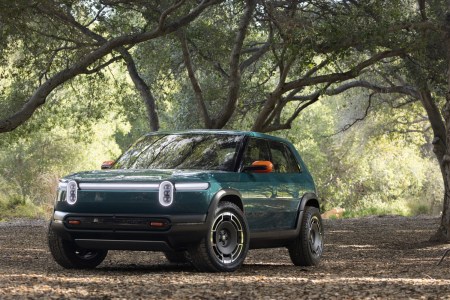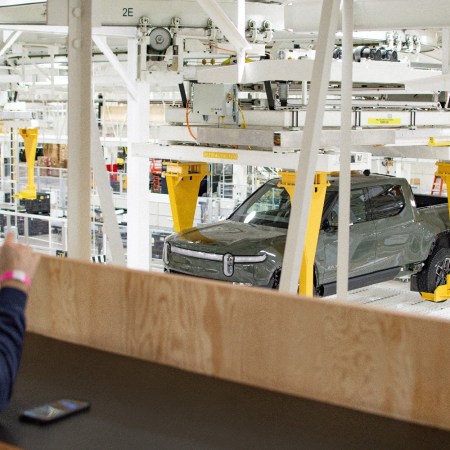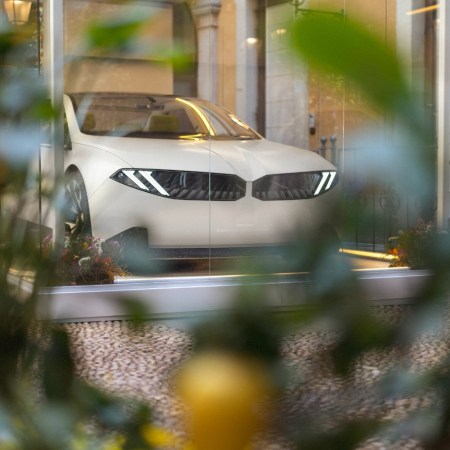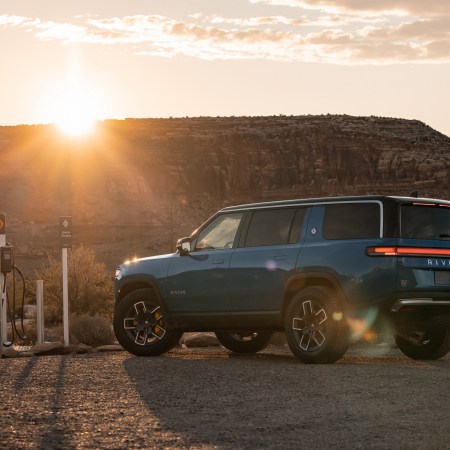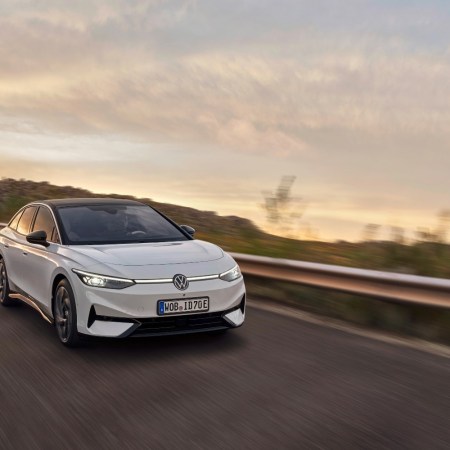Earlier this week, Rivian and Volkswagen announced a strategic partnership that would involve the latter investing $5 billion in the former. Now we have a better sense of what that will look like in practice — and it involves good news for potential EV buyers looking for an affordable entry point into the zero-emissions market.
As Autoblog’s Ronan Glon reports, a presentation accompanying Rivian’s announcement of the VW deal includes references to five as-yet-unannounced EVs. Three of those are labeled “Affordable Mass Market,” which presumably means they’ll be priced below the R2 and R3 that were announced earlier this year. Glon pointed out that the more affordable Rivians are unlikely to debut for a few years, based on the existing production schedule for the R2 and R3.
Of the other two electric vehicles still under wraps, one is labeled as part of Rivian’s Gen 2 (which Rivian has described as any vehicles made in 2025 or later), while the other looks like it’ll be built on a mid-sized platform.
“Since the earliest days of Rivian, we have been focused on developing highly differentiated technology, and it’s exciting that one of the world’s largest and most respected automotive companies has recognized this,” Rivian founder and CEO RJ Scaringe said in a statement. “Not only is this partnership expected to bring our software and associated zonal architecture to an even broader market through Volkswagen Group’s global reach, but this partnership also is expected to help secure our capital needs for substantial growth.”
This Week’s Big Rivian Announcement Isn’t Just About EVs
Two very different pieces of news speak volumes about the automaker’s futureThat growth will involve a wider range of models available, which puts them in line with a growing trend in the EV space. Rivian made announcements earlier this year indicating an interest in making more affordable models available to buyers, which seems to be a growing conviction among carmakers. Recently, BMW announced its own intention to roll out a line of more affordable EVs to consumers, for instance.
The logic behind this makes sense; the end goal for EVs is to be every bit as convenient to drive as their gas-powered counterparts. As the range of EVs gets wider, the closer that goal will get to becoming a reality.
This article was featured in the InsideHook newsletter. Sign up now.

